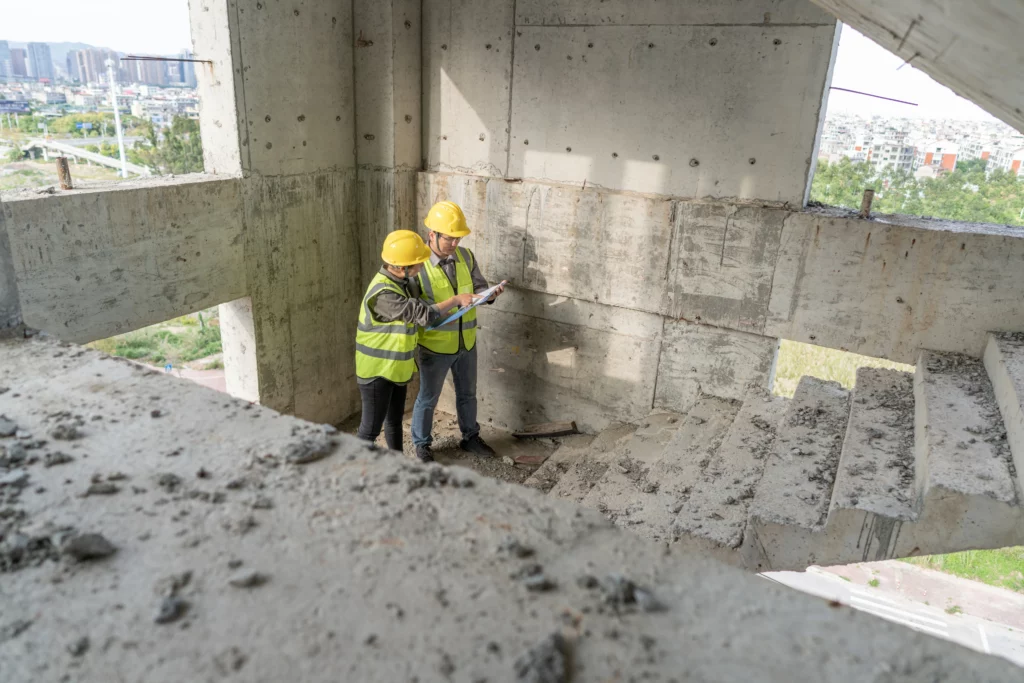In the fast-paced world of modern business, ensuring the safety and wellbeing of your employees is paramount. However, creating a truly safe workplace goes beyond just following regulations; it’s about fostering a culture of behavioural safety.
Behaviour is defined as an action by an individual that is observable by others. It’s estimated that in up to 88% of work-related accidents, employees’ behaviour is a contributing factor, in the form of acts or omissions. Health and safety in the workplace is influenced by a number of factors including the organisational environment, managers’ attitudes, commitment to the nature of the job or task, and the personal capabilities of the worker. Safety-related behaviour in the workplace can be changed by addressing such influences via a Behavioural Based Safety Programme that identifies and reinforces safe behaviour.
What is Behavioural Based Safety (BBS)?
Behavioural Based Safety (BBS), is an approach to workplace safety that focuses on understanding and influencing the behaviours of employees to prevent accidents, incidents, and injuries.
Without an effective BBS programme, behaviour can pave the way for different pre-existing factors to align, leading to a negative event such as an accident, incident or in some worst-case scenarios, a fatality.
Unlike many traditional safety measures that mainly address compliance, BBS acknowledges that human actions and decisions significantly impact workplace safety.
Reason’s Swiss Cheese Model
James Reason’s Swiss Cheese Model is a way to understand that every step or layer in a process has weaknesses that can lead to failure. Think of processes or systems as slices of Swiss cheese placed side by side. Each hole in the Swiss cheese represents a potential weakness at a specific stage or layer. Some holes are “active,” caused by individual errors, while others are “latent,” inherent weaknesses in the process.

If one hole is breached (a failure occurs), however the layer behind it can block further failure. Each “slice” acts as a defense against more errors. However, when holes in each layer align, the risk of a weakness at every stage becomes real, potentially resulting in accidents, injuries or in some cases, a fatality.
The Swiss Cheese Model emphasises the importance of identifying and addressing weaknesses in each layer to prevent accidents and improve the overall safety in your workplace.
Why is Behavioural Based Safety important?
Behavioural Based Safety is important as it addresses the human element of workplace safety. It places a focus on open communication, employee safety engagement, training and learning, and positive reinforcement, all with the aim of proactively reducing risk in the workplace. Have you considered how employee behaviour impacts the overall safety performance of your organisation?
Why do employees engage in “at risk” behaviour” in the first place?
Employees typically engage in “at risk” behaviour to achieve a perceived result. For instance:
- Cutting corners to save time – how often do employees decide not to use personal protective equipment (PPE) because a task may only take a few seconds to complete?
- Ergonomic factors – inappropriately designed machine controls may lead to the adoption of improvised and potentially dangerous working methods.
- Accepted practice – “we’ve always done it that way.”
- Reinforcement by the actions of supervisors –“My supervisor turns a blind eye when we do this because it means we get things done quicker.”
It is important for an organisation to promote the vision of an accident and injury free environment. How people behave at work plays a vital part in achieving that vision. It requires positive and accountable safety behaviour and leadership at all levels of the organisation.
It is also recognised that such a change will only be achieved through the development of a detailed Behavioural Based Safety Programme, which includes specific behavioural safety training at all levels of seniority across the business.
Introducing a Behavioural Based Safety Programme will improve your safety performance and your employees’ commitment to safety. It will also go a long way to ensuring that everybody works safe and goes home safe.
7 steps for an effective Behavioural Based Safety Programme
As highlighted earlier in this article, influence over safety behaviour can be exerted at different levels within an organisation and through different means. All of these require attention if the vision of an accident and injury free workplace is to be a realistic aspiration. Here are 7 quick steps to help you get started:
Step 1: Management Leadership and Involvement
An effective BBS programme starts with strong management participation and leadership. Your senior management must be dedicated to promoting safety, laying out clear guidelines, and setting a good example. Leaders that put safety first convey a strong message to the rest of the company, inspiring employees to adopt safe practices.
Step 2: Continuous Data Collection and Analysis
To drive behavioural change, you need data. Regularly collect and analyse behavioural data to identify safety trends and patterns within your organisation. By understanding the nuances of employee behaviour, you can pinpoint areas of concern and create data-driven strategies to address them.
Step 3: Employee Participation and Engagement
Employees are at the heart of any successful BBS programme. Encourage their active participation and engagement in safety initiatives. Provide channels for feedback, suggestions, and involvement in safety committees. When employees feel they have a voice, they become more accountable for their safety and the safety of their colleagues.
Step 4: Positive Reinforcement
Positive reinforcement is a powerful tool in influencing safe behaviours. Celebrate and reward employees who consistently make safe choices and promote safe behaviours. Examples of this could be reporting positive safety observations or discussing the learning from a safety event such as a near-miss with a colleague. By recognising their efforts, you create a culture where safety is not only expected but also valued and appreciated.
Step 5: Behaviour-Based Interventions
Identify and address unsafe behaviours or conditions promptly. Ensure that your responses are specific to the observed safety issues, whether it involves additional training, process improvements, or equipment modifications. Eventually, you can go one step further and start using the data you are collating to proactively address these behaviours before they become a more pressing issue.
Step 6: Consistent Feedback and Communication
Establish clear channels of communication between employees and supervisors. Regular feedback sessions provide opportunities to discuss safety concerns, provide guidance, and track progress towards safer behaviours. Open communication fosters trust and encourages employees to actively participate in safety programmes.
Step 7: Continuous Improvement
An effective BBS programme is never static. Regularly assess your safety initiatives and make adjustments based on data, feedback, and evolving workplace conditions. By embracing a culture of continuous improvement, you ensure that safety remains at the forefront of your organisations operations.
How Notify can improve Behavioural Based Safety?
By embracing cloud-based health and safety software, organisations can collate, visualise, interrogate and act upon health and safety data to implement an effective Behavioural Based Safety Programme.
If there is one leading indicator that provides an insight into behaviour management and the cultural values of an organisation, it is ‘near miss reporting’. In any organisation, it is essential that all employees understand the value of near miss reporting and how these free learning events can help to prevent accidents and incidents occurring in the future.
Near miss reporting also helps to foster a culture of continuous improvement. As you receive and act on near miss reports, it sends a message to employees that safety is paramount in the organisation. It also reinforces that their input is key to helping ensure a safe workplace.
With the feedback to reporter functionality, Notify streamlines the communication process by allowing the investigator to feedback the outcome of any near miss, accident or incident investigation. This feedback, along with positive reinforcement, will mean that employees are likely to continue reporting near misses and actively engaging in safety initiatives.
Notify also provides visibility into the number and nature of near misses being reporting via interactive dashboards. This transparency holds everyone accountable for safety and encourages employees, managers, and leaders to actively participate in safety initiatives.
The data collected from near miss reports allows you to implement data-driven interventions. By identifying common themes in near misses via the Notify dashboard, you can design targeted training, provide additional resources, or make process improvements to address the root causes effectively.
A Behavioural Based Safety Programme will clearly identify the requirements and reasons why it is so important to report near misses on a frequent basis. The ultimate aim is to improve the near miss reporting culture to prevent accidents; however this can only be done with active participation from everyone within the workplace.
It is strongly recommended that all organisations look at the benefits of introducing a Behavioural Based Safety Programme, as this can significantly improve and develop their safety culture and safety performance.
Implementing a system such as Notify will allow organisations to capture data on unsafe acts / unsafe conditions to establish their Behavioural Based Safety Programme, specific to the behaviours of their workforce.
To get more insight, download our eBook: Preventing workplace accidents with Behavioural Based Safety
Behavioural Based Safety FAQs
- Can Behavioural Based Safety be applied to any industry?
Yes, BBS can be applied across various industries, including manufacturing, construction, transport and more. While the specific behaviours and risks may differ from one industry to another, the fundamental approach of observing, measuring, and influencing behaviour towards safer outcomes is universally applicable.
- How do you measure the success of a Behavioural Based Safety program?
Success can be measured through a variety of metrics, including but not limited to:
- A reduction in the number of accidents and injuries.
- An increase in safe behaviour, such as observing employees wearing the correct PPE.
- Higher engagement levels in safety programs and initiatives. This can include an uplift in near-miss reports or positive safety observations.
- Feedback from employees on the safety culture.
- Changes in safety performance indicators over time, such as reduction in lost time incidents or a lower accident frequency rate.
- Is Behavioural Based Safety better than traditional safety programmes?
BBS complements traditional safety programmes by adding a behavioural element to the safety management system. While traditional programmes focus more on compliance and environmental controls, BBS focuses on changing employee behaviour and attitudes towards safety. Both approaches are important and, when used together, provide a comprehensive framework for effectively improving workplace safety.



